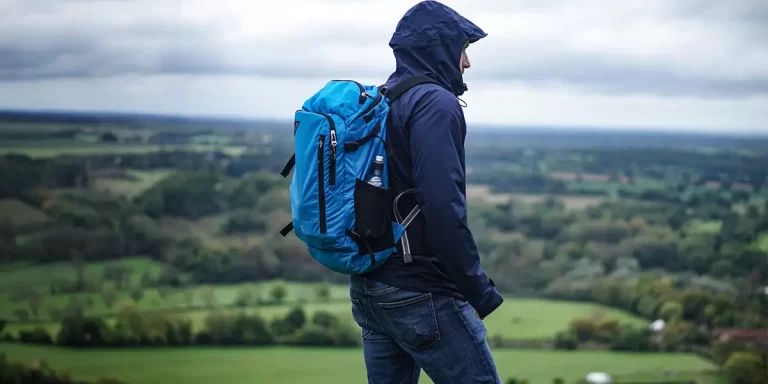

Imagine setting off on an exciting backpacking trip, only to be hindered by an uncomfortable, ill-fitting backpack. That’s where the secret to a great backpacking experience comes in: measuring your torso length.
In this post, we’ll simplify the process of finding the perfect backpack fit by focusing on your torso length. No complex terms or confusion here – just straightforward steps to ensure your backpack feels comfortable.
Interested? Let’s get started.
Let’s dive into the process itself. Don’t worry; it’s simpler than it sounds. All you need is a flexible tape measure and a friend (or a mirror) to assist you.
Step 1: Finding Your C7 Vertebra

Step 2: Locating Your Iliac Crest

Step 3: Measuring Your Torso Length

Remember, accuracy is key here. Ensure that you stand naturally and avoid holding your breath or arching your back.

Now that you’ve measured your torso length, you might be wondering how to translate that measurement into choosing the right backpack size.
Your Torso Length, Your Backpack Size:
On most backpacks, you’ll find a sizing chart that correlates torso lengths to specific pack sizes (e.g., extra-small, small, medium, large). Match your torso length with the manufacturer’s sizing chart recommendation.
Your torso length will probably be between 15-20”. REI defines sizing as:
If your torso size falls between two options, here’s what you can do:
We’ve discussed measuring your torso length, but there’s another crucial factor for a well-fitting backpack: your hip size. The often overlooked hipbelt is vital for weight distribution and a comfortable hike.
The Hipbelt’s Vital Role: The hipbelt carries over 80% of your pack’s weight, reducing strain on your shoulders and enhancing balance and comfort. A well-fitting hipbelt prevents back pain and discomfort on long hikes.
How to Measure Your Hip Size:
These waist measurements are common standards employed by most backpack manufacturers:
In terms of backpack fit, it’s crucial to recognize that backpacks and bodies vary. Female adventurers have a specific consideration: women’s-specific backpacks.
Why Women’s-Specific Packs?
It is worth mentioning that some women may find that a well-fitting men’s pack works better for them, while others will prefer the tailored design of a women’s-specific pack.
In this post, we’ve simplified the process of finding the perfect backpack fit by focusing on your torso length. No complex terms or confusion here – just straightforward steps to ensure your backpack feels comfortable.
Now that you have your torso length and hip size measurements, you’re all set to pick the right backpack. So, get out there, hit the trails, and enjoy your well-fitted backpack that’ll make your trip truly special.
Interested in an ultralight backpack? Check out our TOP 5 guides for the lightest backpacks on the planet.
Absolutely, when it comes to selecting a backpack, your body proportions, including having a tall stature with a short torso, play a crucial role. It’s common for individuals to have varying body proportions, and this can impact how a backpack fits. If you’re tall with a short torso, you might find that certain backpacks designed for taller individuals may not fit your torso comfortably.
Your backpack should primarily rest on your hips, not your waist. The hipbelt of the backpack should sit snugly on top of your hip bones, also known as the iliac crest. This positioning ensures that the majority of the pack’s weight is carried by your hips, reducing strain on your shoulders and providing better balance and comfort during your hike. The waist, which is slightly higher than the hips, should not bear the brunt of the load to prevent discomfort and back pain.